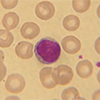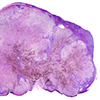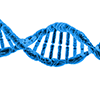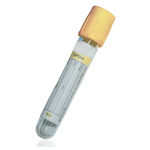
- Home
- Clinical Chemistry Tests
- Alpha Subunits (ASU)
Alpha Subunits (ASU) ASU
Specimen Volume
1 mL blood (min 500uL serum)Specimen Transport
First Class Post
Sample Preparation
Turnaround Time
3 weeksSample Processing In Laboratory
No special requirements
Sample Stability
5 days at 4°C or 6 months at -20°CGeneral Information
TSH, LH and FSH are glycoproteins composed of two sub-units termed α and β. The intact glycoproteins and their common α sub-unit (ASU) are secreted in a pulsatile manner in normal subjects. The majority of pituitary adenomas produce pathological symptoms resulting from hypersecretion of the hormone by a tumour. However, up to 30% of such tumours have no such pathology and have been termed clinically non-functioning. It has been reported that a large number of such non-functioning adenomas may synthesise and secrete intact glycoprotein hormones or their sub-units.
Serum ASU may also be elevated in patients with functioning pituitary tumours such as the rare thyrotropinmas and gonadotropinomas. Measurement of ASU may be used for the detection and monitoring of these adenomas.
It may also be elevated in primary hypogonadism, renal failure and primary thyroid disease and interpretation of the results should take these factors into account.
ASU may be elevated in gastro-entero-pancreatic tumours and in particular it may be useful in the investigation of anomalous thyroid function tests, where thyrotropinoma, thyroid hormone resistance and analytical interference have all to be considered.
Patient Preparation
No special patient preparation required. Sample must be collected into yellow or red top container only.
Notes
Please send clinical details including results of other pituitary hormone tests.
Reference Range
- Adult males and pre-menopausal females: <1.0 IU/L
- Post-menopausal or mid-cycle females: <3.0 IU/L
Pregnancy - there is a 0.1% cross reaction with hCG resulting in very high ASU results in pregnancy.
Results should be interpreted along with the serum LH, FSH and TSH results and renal function tests.
Source of Reference Range
In house validationSpecifications
-
EQA Status:
No EQA Scheme - sample exchange in place
- EQAS Scheme: No
Creation Date
Monday, 08 August 2011Modification Date
Wednesday, 24 January 2024General Information
Location of Laboratories
Copyright UHB Pathology 2018
Protection of Personal Information – Clinical Laboratory Services comply with the Trust Data Protection Policy and have procedures in place to allow the Directorate and it’s employees to comply with the Data Protection Act 1998 and associated best practice and guidance.
University Hospitals Birmingham medical laboratories at Queen Elizabeth Hospital, Heartlands Hospital, Good Hope Hospital and Solihull Hospital are UKAS (United Kingdom Accreditation Service) accredited to the ISO 15189:2012 standard. For a list of accredited tests and other information please visit the UKAS website using the following link: https://www.ukas.com/find-an-organisation/
- Molecular Pathology is a UKAS accredited medical laboratory No. 8759
- Biochemistry is a UKAS accredited medical laboratory No. 8910
- Haematology and Transfusion is a UKAS accredited medical laboratory No. 8784
- Clinical Microbiology is a UKAS accredited medical laboratory No. 8760
- Cellular Pathology is a UKAS accredited medical laboratory No. 10141
- Musculoskeletal laboratory is a UKAS accredited medical laboratory No. 9897
- Heartlands, Good Hope and Solihull Hospital pathology laboratories are a UKAS accredited medical laboratory No.8217.
Tests not appearing on the UKAS Schedule of Accreditation currently remain outside of our scope of accreditation. However, these tests have been validated to the same high standard as accredited tests and are performed by the same trained and competent staff.
For further test information, please visit the test database: http://qehbpathology.uk/test-database
For further information contact Louise Fallon, Quality Manager, 0121 371 5962
 Biochemistry
Biochemistry Haematology and Transfusion
Haematology and Transfusion Clinical Microbiology (Including Virology)
Clinical Microbiology (Including Virology) Cellular Pathology
Cellular Pathology General Information
General Information Molecular Pathology
Molecular Pathology